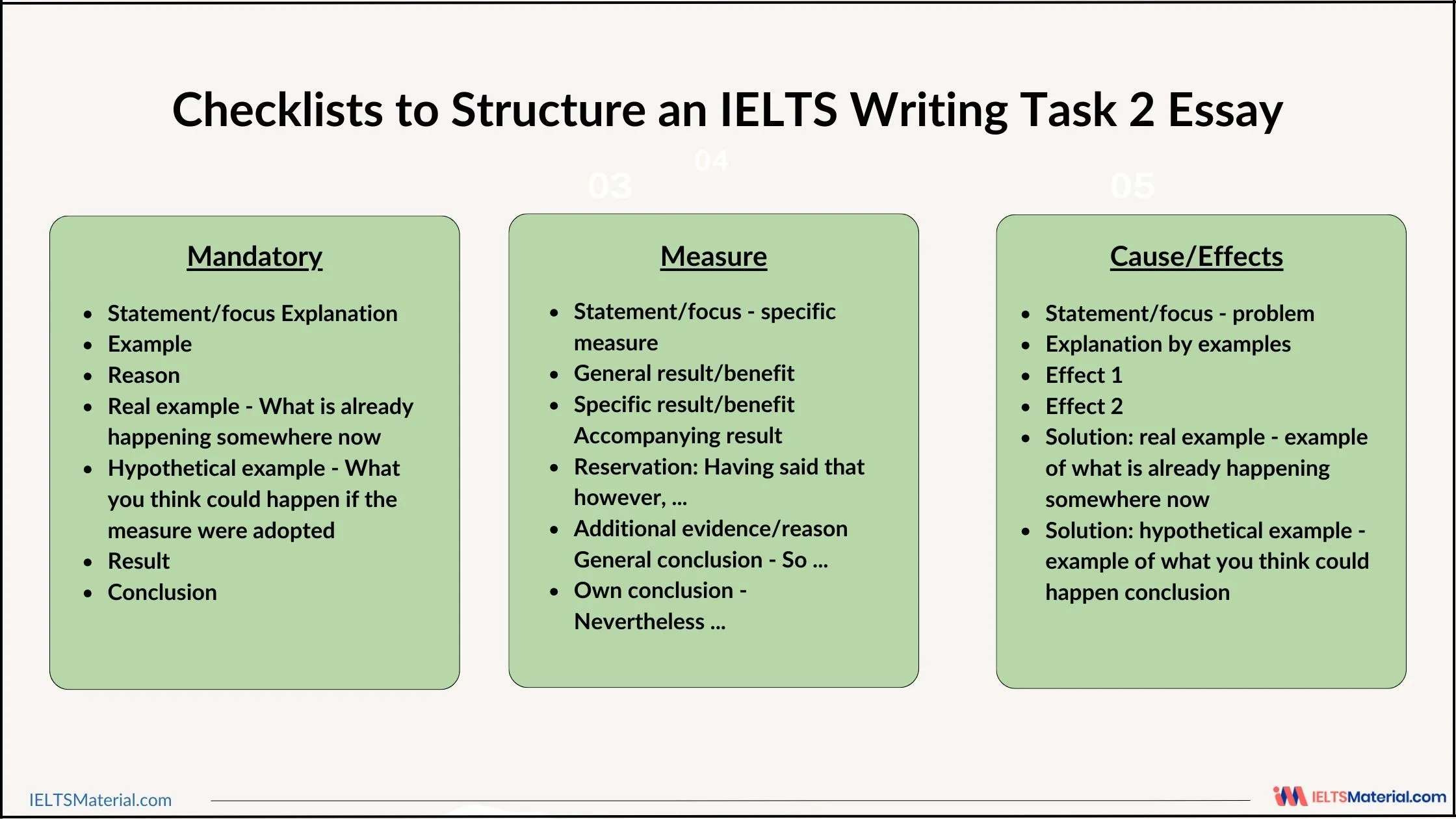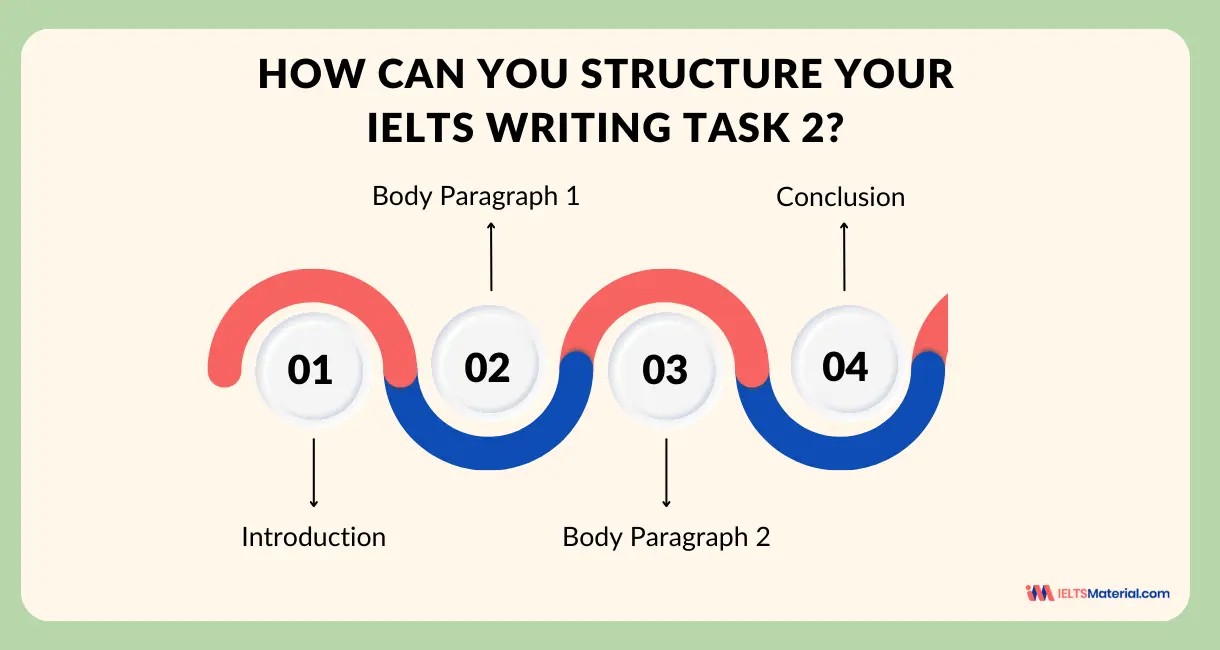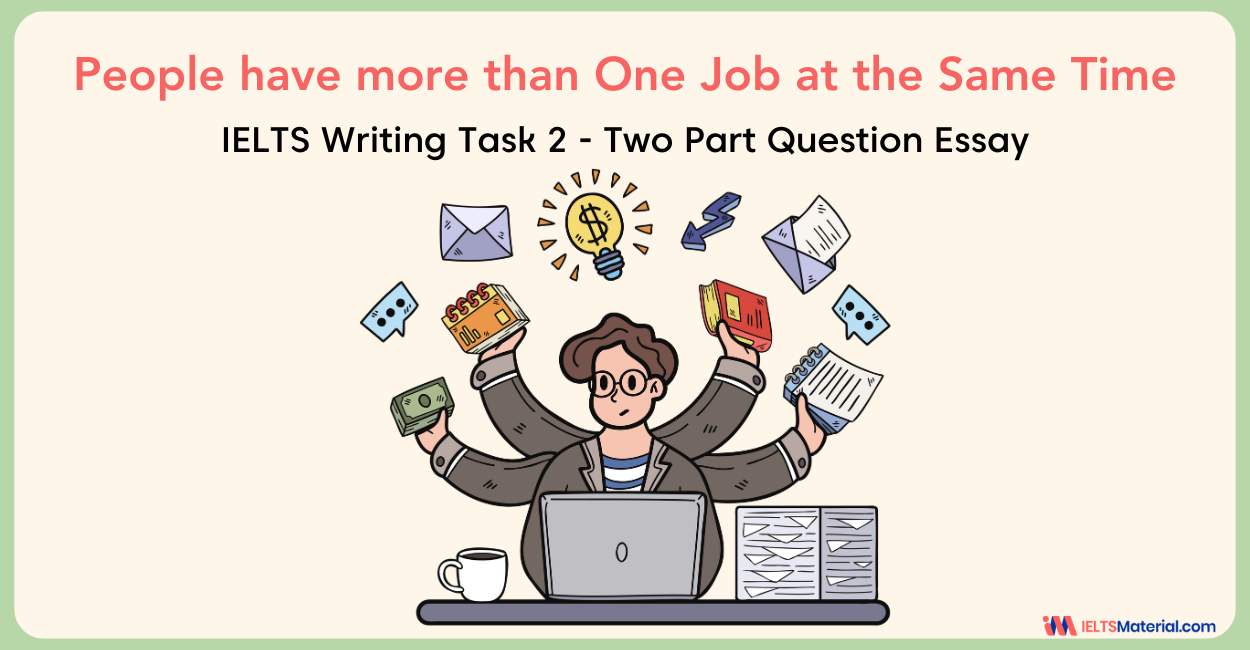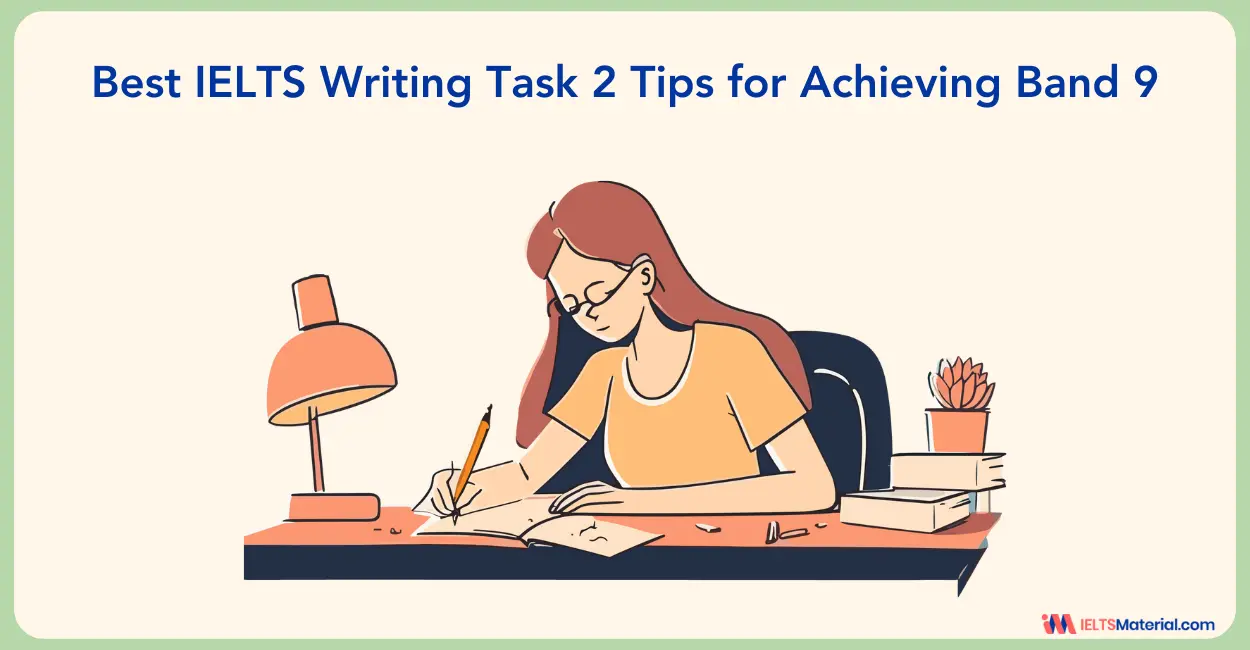Best IELTS Writing Task 2 Tips for Achieving Band 9
12 min read
Updated On
-
Copy link
Achieving a Band 9 in IELTS Writing Task 2 requires strong writing skills, strategic planning, and attention to detail. Enhance your IELTS skills with expert IELTS Writing Task 2 tips, common topics, and sample answers for Writing Task 2 essays.
Table of Contents
- Best IELTS Writing Task 2 Tips for Achieving Band 9 in 2025
- Additional Advanced IELTS Writing Task 2 Tips
- IELTS Writing Task 2 Tips on How to Structure Your IELTS Writing Task 2 Band 9 Essay
- Common IELTS Writing Task 2 Topics for Practice
- How to Write an IELTS Writing Task 2 Band 9 Essay Using the Writing Task 2 Tips and Tricks?

IELTS Writing Prediction Questions for 2024
Scoring a band 9 in IELTS Writing seems impossible? Use our smart IELTS Writing Task 2 tips and impress the examiners by putting your best foot forward.
In IELTS Writing Task 2, candidates are asked to write an essay of at least 250 words, in 4-5 paragraphs based on the given topic. The task is similar for both IELTS Academic and General Training, based on the type of questions and the scoring. However, the topics given for IELTS General Training will be slightly easier than Academic.
Hence, in this blog, we will discuss best and advanced IELTS Writing Task 2 tips, the Task 2 band descriptors and read more authentic IELTS essay examples and topics to practice with the right techniques for a Band 9.
Best IELTS Writing Task 2 Tips for Achieving Band 9 in 2025
The key to a Band 9 in Writing Task 2 is a combination of strong writing skills, strategic planning, and attention to detail. Since Writing Task 2 is similar in content and format, IELTS writing task 2 academic tips and tips for IELTS general writing task 2 are also the same. So, you can follow the ones given below for both.
Here are the best IELTS Writing Task 2 tips to help you reach this goal:
1. Understanding IELTS Writing Task 2 Band Descriptors
The IELTS Writing Task 2 marking criteria outline the criteria used by examiners to assess your essay writing performance. Let’s check out the table below for a quick look!
|
Criteria |
Description |
|---|---|
|
Task Response |
|
|
Coherence and Cohesion |
|
|
Lexical Resources |
|
|
Grammatical Range and Accuracy |
|
2. Understand what you need to do
- Read the task carefully and make sure you get it.
- Figure out what type of essay you have to write, like sharing your opinion, discussing a topic, or suggesting solutions.
- Pay attention to any rules about how many words you can use or specific points you must cover.
3. Make a plan and organize your ideas
- Take a few minutes to think of ideas about the topic.
- Make a simple outline with an introduction, body paragraphs, and a conclusion.
- Decide what to write in each part of your essay and organize your thoughts logically.
4. Start with an interesting introduction
- Begin your essay with a sentence that grabs attention.
- Give a bit of background information to help the reader understand.
- Clearly state your main idea or argument.
5. Write clear body paragraphs
- Start each paragraph with a sentence that tells the main point.
- Make sure your essay flows well from one paragraph to the next.
- Support your arguments with relevant examples, data, or personal experiences.
- These examples should be specific and well-chosen to illustrate your points effectively.
6. Use clear language and vocabulary
- Use different words and advanced grammar structures for IELTS.
- Show you can express ideas accurately and clearly.
- Use connectors/linking words for IELTS Writing Task 2 that help connect your ideas, like “however” or “on the other hand.”
7. Conclude well
- Summarize the main points in your essay.
- Repeat your main idea and give it a final thought.
- Leave the reader thinking or asking questions.
8. Check and fix mistakes
- Take time to read through your essay and correct any mistakes in spelling or grammar.
- Make sure your ideas make sense and are connected.
- Improve anything that could be clearer or better.
9. Manage your time
- Use your time wisely for each part of the test.
- Practice essays from IELTS writing practice papers in the time you’re given to get faster.
- Keep track of how long you spend on each task and adjust if needed.
10. Get feedback to keep getting better
- Share your essays with someone who can give you advice.
- Find out what you need to work on and practice those skills.
- Keep writing essays regularly to improve more and feel more confident.
Additional Advanced IELTS Writing Task 2 Tips
Besides writing task 2 tips and strategies for framing a Band 9, there are certain pointers that you need to follow to improve your overall writing skills for IELTS. They are:
Learning from Band 9 Essay Samples
Reading IELTS band 9 essay samples is an excellent way to understand what makes an essay successful and how you can improve your writing. These essays demonstrate strong coherence and cohesion, precise vocabulary, a wide range of grammatical structures, and well-developed ideas. By analyzing them, you can understand how successful candidates structure their arguments, use linking words effectively, and present balanced viewpoints with clear examples.
Using Proper Sentence Structures for Your IELTS Essay
Practice combining the functions in different ways is one of the most effective IELTS Writing Task 2 tips. Therefore, learn how to write complex sentences in IELTS Writing and other sentence types that you use. For example, think of sentences in pairs. Then think what would come after the second function in the pair and so on.
- Practice this until it becomes a fluid and automatic technique.
- The more organized you are in your writing, the more fluent and flexible you will be.
- So make sure you know and can use a wide range of connections and functions.
- The more organized you are, the fewer mistakes you will make.
- If you do not have to think about the organization of a question in the exam, you will be able to concentrate on avoiding repetition and expressing your ideas.
- Mark out the end of each paragraph before you write an essay and aim for that point. It helps you to focus your ideas and stops you from rambling.
- Take a blank sheet and then write down everything you know about a specific aspect of Writing Task 2: what you know about introductions; what common sentence functions you use; what common connecting words and phrases you know – for, but, and, so, etc.
- This will show you what you know and what you don’t know. It will help you organize your thoughts and increase your confidence and hence your speed.
- Above all know yourself, your strengths, your limitations and your common mistakes. Then push your limitations and correct your mistakes.
Including Common Mini Sequences of Functions In IELTS Writing Task 2
As you become more confident, you can build these sequences and write and learn to combine them in whatever way suits you.
- Measure/result/reason; general example; specific example
- Condition (if/unless); result; real example
- Problem; cause; solution; reason; general and specific example
- Opinion; explanation; reason; general example; specific example; my opinion
The following checklist is only a guideline and can be adapted in many different ways. You can combine the information in endless different ways. You can take parts from one checklist and add them to another.

Try and think about these sequences without writing them down. You can combine and recombine them. In this way, developing your flexibility helps develop fluency in connecting text and prevents over-generalizing.
Get All the Tips with Some Extras to Write Like a Pro in One Go!
IELTS Writing Task 2 Tips on How to Structure Your IELTS Writing Task 2 Band 9 Essay
Apart from the band descriptors and IELTS writing essay tips, there are certain aspects, like the structure of the IELTS Writing Task 2 essay, that might help you achieve the top IELTS band score. Check out the details on everything you need to know to maximize your IELTS Writing Task 2 band score. Read ahead!

For IELTS Writing Task 2, both Academic and General, you should follow a particular structure. You need to write an introduction to the topic. It should be followed by a paragraph with logical analysis. You should also give an appropriate conclusion.
Introduction
The introduction should tell the examiner what the rest of the essay is about and also answer the question directly. This tells the examiner that you know what you are doing straight away and helps you write your main body paragraphs.
Task 2 Tips to Write the Introduction:
- Keep the introduction crisp and short.
- Write no more than two or three sentences – about 30 words.
- Connect your introduction and title. Write a general statement relating to the topic.
- Then write a sentence which contains the parts of the questions you are asked about: … factors contributing to… etc.
- Where you can, use synonyms to rephrase the question.
- Cross out any notes in the plan you made.
- Remember that quality is better than quantity.
- Do not panic if other people are writing more than you.
Supporting Paragraphs
This is where you give the examiner more detail. You do this by stating your main points and supporting them with explanations and relevant examples.
Additionally, writing a statement with a focus word is the key! E.g. The main cause/factor is … Alternatively, you can just state the cause or begin to explain the situation.
Task 2 Writing Tips for Supporting Paragraphs
- As a rough guide, write about 75/80 words for each paragraph – about 7/8 lines if you write 10 words per line.
- Mark this on the answer sheet and write towards this mark.
- Repeat this for the subsequent paragraphs.
- As you write, use a pencil, but try not to rub out corrections or changes, as this wastes a lot of time.
- Cross out any changes with one line. Write above if you have space.
- Only rub out the text you want to change if you don’t have space to write above.
- Make sure each paragraph is connected with the previous one, as you are marked according to how you organize each paragraph.
- You only need to use a limited range of sentence/clause types to write effectively.
Conclusion
Here you provide a summary of what you have already said in the rest of the body paragraphs.
- Once you are done giving the for and against opinions, summarise the points briefly.
- You need to prove to the examiner that you have a good command over the language, IELTS grammar and IELTS vocabulary.
Common IELTS Writing Task 2 Topics for Practice
Given below are the most common IELTS essay topics for Writing Task 2 in 2025, Read the list and look at band 9 sample answers related to them as well!
|
Category |
Samples |
|---|---|
|
Health |
|
|
Environment |
|
|
Education |
|
|
International Development |
|
|
Globalisation |
|
|
Public Transport |
|
|
Crime & Punishment |
|
|
Youth Crime |
|
|
Technology |
|
|
Traditional Culture |
|
|
Travel & Tourism |
|
|
Society |
Register yourself in our IELTS online classes for more such tips and tricks important for your IELTS preparation.
How to Write an IELTS Writing Task 2 Band 9 Essay Using the Writing Task 2 Tips and Tricks?
Since you have already gone through the IELTS Writing Task 2 tips, it is high time you go through a Writing Task 2 sample and see how the tips and strategies have been implemented.
Question
Some people believe that the government should take care of old people and provide financial support after they retire. Others say individuals should save during their working years to fund their retirement. What is your opinion?
Write at least 250 words.
A breakdown of the given IELTS writing task 2 band 9 essay:
Step 1: You are given an opinion essay which means you have to state your point of view regarding the question.
Step 2: Once you understand the question and decide your opinion, you can start planning your essay and then writing it. Don’t forget to state your opinion on it.
Step 3: Introduction
- State your opinion clearly. Explain in brief what you are going to write in the body paragraphs.
Many argue that the government should look after elderly people and provide them with pensions after they are 60 years old. However, others say that people themselves should save money for later use. I agree with the former viewpoint because savings would not be enough to support people, and residents pay taxes to the government all their life.
Step 4: Body Paragraph 1
The main reason why the government must take care of old people is that their savings would not be able to support their medical bills, house rent, and monthly groceries. This is because the inflation rate has been quite high in the last few decades and there are no signs that the inflation rate will go down in the coming years.
Step 5: Body Paragraph 2
Another reason behind this is that people pay taxes to the government authorities while they are working. The government collects taxes from residents as an income tax, service tax, and property tax. Therefore, people already have paid enough to the state that they can pay monthly pensions to all elderly people.
Step 6: Conclusion
Restate your opinion in clear and direct sentences.
IELTS Band 9 Writing Task 2 Sample Answer
Many argue that the government should look after elderly people and provide pensions after they are 60 years old. However, others say that people themselves should save money for later use. I agree with the former viewpoint because savings would not be enough to support people, and residents pay taxes to the government all their lives.
The main reason why the government must take care of old people is that their savings would not be able to support their medical bills, house rent, and monthly groceries. This is because the inflation rate has been quite high in the last few decades and there are no signs that the inflation rate will go down in the coming years. This will lead to people who have a small amount of money to pay their bills. For example, a recent study in the US found that in the coming years, the prices of housing, medical, and other necessary items will go so high that it would be very difficult for people to buy certain items. Therefore, the authorities must look after elderly people.
Another reason behind this is that people pay taxes to the government authorities while they are working. The government collects taxes from residents as an income tax, service tax, and property tax. Therefore, people already have paid enough to the state that they can pay for monthly pensions to all elderly people. To illustrate, the UK government imposes a 30% tax on income, and the government earns millions of pounds. A small portion of this income should be distributed to people in the form of pensions to older people.
In conclusion, the government should take responsibility for their citizens for their health and financial assistance because monthly savings will not be able to cover their monthly bills, and taxes are paid to the taxation authorities by people all their lives. To read more IELTS Band 8 Essay samples, you can check out IELTS (Academic) Writing Actual Tests eBook Combo or Complete Edition of IELTS General Writing.
Useful Resources
- 6 Great Essay Writing Secrets You Must Know to Boost Your IELTS Score
- 10 Useful Structures to Express Contrasting Ideas in IELTS Speaking & Writing Task 2
- Popular Synonyms for 'My Opinion' You Can Use in IELTS
- Tips to Write an Effective Introduction for IELTS Writing Task 2
- IELTS Recent Actual Tests 2025 | Listening, Reading, Speaking and Writing (Academic or General)
Frequently Asked Questions
What are the golden rules to be remembered while writing an essay in the IELTS Writing Task 2?
How can I present information and score well in Writing Task 2?
What kind of essay should I present in task 2?
Do the examiners really count the words for IELTS Writing Task 2?
How much is IELTS Writing task 2 worth?
Practice IELTS Writing Task 2 based on Essay types

Effective IELTS Essay Connectors for Writing Task 2 & Task 1
Explore other Writing Articles

Kasturika Samanta

Prity Mallick

Prity Mallick

Kasturika Samanta
Recent Articles

Haniya Yashfeen


Prity Mallick

Kasturika Samanta




Post your Comments
2 Comments